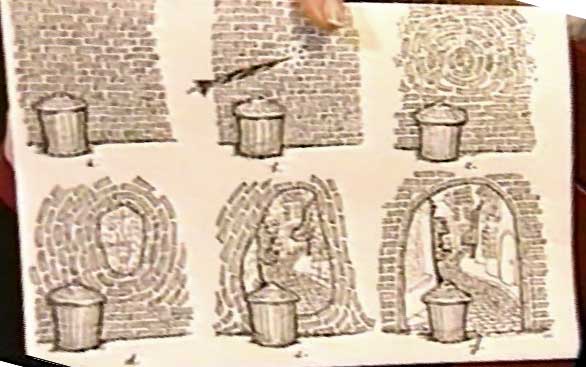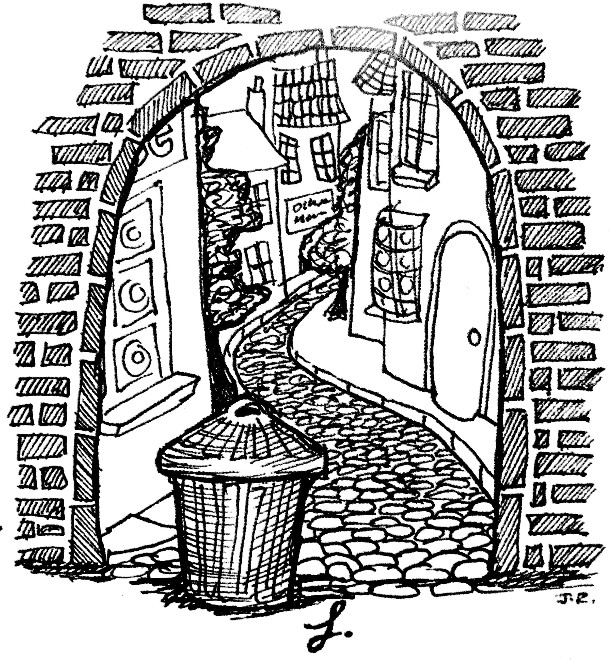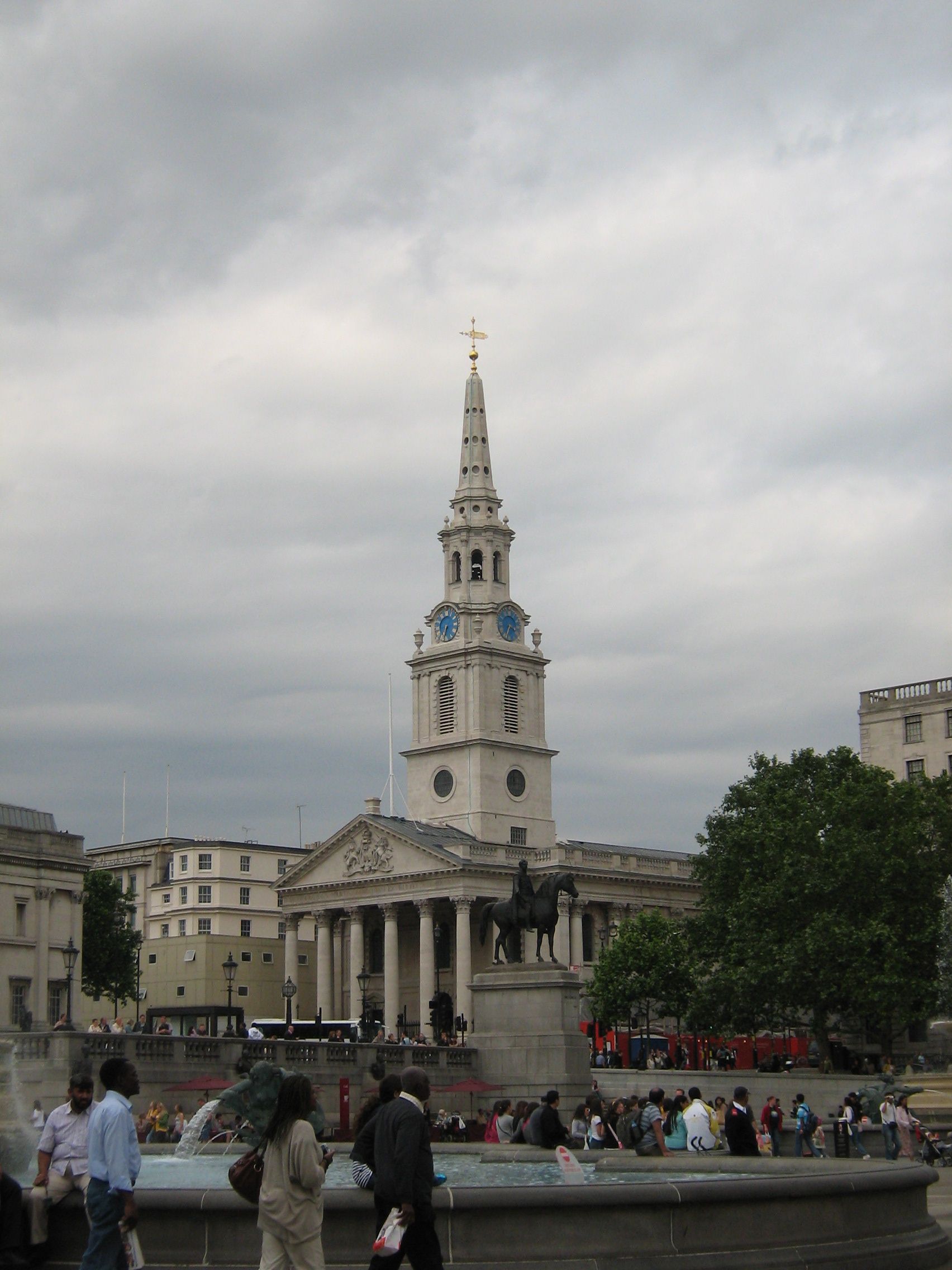| Diagon Alley
Esiste veramente per i maghi? Dove si trova?
Gli studi e le supposizioni dei fan inglesi (grazie a Claire per il preziosissimo contributo dal suo sito!)
Parte Terza Tantissimi ringraziamenti a Mariaemila per la traduzione Continuo con la pubblicazione delle supposizioni e considerazioni ben circostanziate di Claire dal suo sito In questa parte Claire espone le conclusioni del suo accurato lavoro di ricostruzione.
Claire avanza ipotesi anche sull'epoca di Diagon Alley, individuando quella Georgiana, o addirittura anteriore, piuttosto di quella Vittoriana e fa uno stupendo excursus storico che è davvero affascinante.--------------- So, we can imagine Diagon Alley as a fusion of these four streets: rough-cobbled like Hocker Hill Street; winding like both Hocker Hill Street and St Mary Street; long and with many pavement cafés like Rose Street; level like Rose Street and Cecil Court; and full of interesting and curious small shops and pubs, like Rose Street and St Mary Street and like the Cecil Court/ St Martin's Lane complex which really does exist at the back of Charing Cross Road. Perciò, possiamo immaginare Diagon Alley come una fusione di queste quattro strade: acciottolata grezzamente come Hocker Hill Street; tortuosa come entrambe Hocker Hill Street e St Mary Street; lunga e con molti caffè all’aperto come Rose Street; pianeggiante come Rose Street e Cecil Court; e piena di negozietti e pub interessanti e curiosi come Rose Street e St Mary Street, e come il complesso Cecil Court/St Martin’s Lane che esiste effettivamente dietro Charing Cross Road.
Since it's meant to be a London street, the actual look of the buildings ought to be most like those in Cecil Court/St Martin's Lane: but being JKR's creation it may well look more like St Mary Street. Dato che è stata pensata per essere una strada di Londra, l’aspetto effettivo degli edifici dovrebbe essere più simile a quelli in Cecil Court/St Martin’s Lane; ma essendo una creazione di JKR, potrebbe tranquillamente somigliare maggiormente a St Mary Street.
Rowling's own sketch of Diagon Alley is hard to make out as I only have a very low-resolution image of it. As far as one can tell, however, it does bear some resemblance to all the streets I have mentioned, although it looks most like Hocker Hill Street. It has a winding, rough-cobbled floor with the buildings standing at oddly-asorted angles, as in Hocker Hill Street. There is a narrow raised pavement with a lower cobbled level in between: this is another feature shared with Hocker Hill Street, whereas St Mary Street and Rose Street have "pavements" which are at the same level as the street, although paved with different material. Judging from the height of the doors the cobbled central area appears somewhat wider than in Hocker Hill Street - seven or eight feet as opposed to about five feet. We must assume that both street and pavement widen out further along, or there would be no room for pavement cafés. Lo schizzo originale di Diagon Alley della Rowling è difficile da interpretare perché io ne ho solo un’immagine a bassa risoluzione. Per quel che si può vedere, ha qualche somiglianza con tutte le strade che ho citato, anche se sembra soprattutto simile a Hocker Hill Street. È tortuosa con marciapiedi rialzati e stretti, con un livello acciottolato più basso in mezzo: questa è un’altra caratteristica condivisa con Hocker Hill Street, mentre St Mary Street e Rose Street hanno “marciapiedi” allo stesso livello della strada, anche se costruiti con materiale diverso. A giudicare dall’altezza delle porte, l’area acciottolata centrale appare leggermente più larga che in Hocker Hill Street – sette o otto piedi ( 2,5 m) rispetto a circa cinque (1,5 m). Dobbiamo dedurne che sia la strada che i marciapiedi si allargano successivamente, o non ci sarebbe spazio per i caffè all’aperto.
The building nearest to the entrance on the left is pale and has a large window set low to about knee-height, possibly with a sash casement and with a definite sill, again resembling those on the houses in Hocker Hill Street - closely enough to suggest that JK may have been working from a photograph. Beyond this close-up window on the left we glimpse a strange dark shape which may be a misguided attempt to draw a bay window from the side, or perhaps a protruding upper storey. Beyond that is a straight-sided pale building with a pale, pitched roof. L’edificio più vicino all’ingresso sulla sinistra è chiaro e ha una grande finestra posizionata circa ad altezza di ginocchio, forse con un’intelaiatura a ghigliottina e con un davanzale, ancora una volta somiglianti a quelli della case in Hocker Hill Street – talmente simili da suggerire l’ipotesi che JKR abbia utilizzato una foto per il disegno. Oltre questa finestra in primo piano, sulla sinistra abbiamo uno scorcio di una strana forma oscura che potrebbe essere un tentativo malriuscito di disegnare una finestra a bovindo lateralmente, o forse un piano superiore sporgente. Dopo di quello c’è un edificio chiaro dalla forma dritta con un tetto a punta.On the right, further away than the building with the windowsill, is a pale two-storey building with a heavy, round-topped door next to which is what looks like a bay window made of very small panes, almost identical to one in the photo' of St Mary Street, above, except that in St Mary Street the bay window is upstairs, and in Diagon Alley it's at street level. Alternatively, the apparent bay window may actually be an illusion caused by two flat windows seen side by side on adjacent buildings. Either way, there is a smaller, blurred window above it, possibly with a sill or a window box, and the beginnings of a dark pitched roof. Sulla destra, più in là dell’edificio con il davanzale, c’è un edificio chiaro a due piani, con una porta pesante dalla sommità arrotondata, vicino alla quale c’è qualcosa che sembra un bovindo fatto di piccoli pannelli, praticamente identico a quello nella foto di St Mary Street più sopra, eccetto che in St Mary Street il bovindo è al piano superiore, mentre in Diagon Alley è a livello della strada. In alternativa, quello che sembra un bovindo potrebbe essere un’illusione causata da due finestre piatte viste lato contro lato su edifici adiacenti. In ogni caso, c’è una finestra sfocata più piccola sopra di quello, possibilmente con un davanzale o un portavasi, e l’inizio di un tetto scuro a punta.Beyond this building with the rounded door and possible bay window is another pale building set at a different angle - or perhaps another section of the same building. Beyond that is another dark building which appears to have either an awning or some sort of fancy pelmet sticking out over the street, such as those found to some extent in Cecil Court and to a much greater degree of development in Rose Street. Oltre questo edificio con la porta arrotondata, e un possibile bovindo, c’è un altro edificio chiaro posizionato ad un angolo differente – o forse un’altra sezione dello stesso edificio. Oltre a quello, c’è un altro edificio scuro che sembra avere o una tenda o una specie di mantovana che sporge sulla strada, come quelle che si trovano in qualche parte di Cecil Court, e in maggior quantità in Rose Street.
At the end, a pale two-storey building with oblong, small-paned windows and a dark-tiled roof faces up the street. This looks quite a lot like the building with oblong, small-paned windows which faces along Cecil Court, except that the real-life building is taller. In fondo, un edificio chiaro a due piani con finestre oblunghe a pannelli piccoli e un tetto a tegole scure si affaccia sulla strada. Questo assomiglia parecchio all’edificio con finestre oblunghe a pannelli piccoli che si affaccia su Cecil Court, tranne che l’edificio reale è più alto.
As far as one can tell from such a blurred image, the overall appearance looks Georgian or earlier, rather than Victorian. Establishing the initial date of Diagon Alley is highly problematic, for reasons connected with the history of the area. Per quel che si può capire da un’immagine così sfuocata, l’aspetto generale sembra Georgiano o antecedente, piuttosto che Vittoriano. Stabilire la data d’inizio di Diagon Alley è altamente problematico, per ragioni connesse alla storia dell’area.According to the Famous Wizard Cards the Leaky Cauldron was established as a gate into Diagon Alley some time between around 1490 and 1550, which means Diagon Alley is at least that old. Yet, Diagon Alley is not likely to be a remnant of Mediaeval London, because early maps show that the district was all green fields and market-gardens until the mid to late sixteenth century. The church at the head of St Martin's Lane is called St Martin-in-the-Fields because when it was originally built, it was; and the area north and east of it, close to where Diagon Alley must be sited, was called Covent (convent) Garden because prior to the Dissolution of the Monasteries it was the vegetable garden of a local nunnery. Urban development of Covent Garden was begun in 1630 and it was only in the mid to late seventeenth century that the area began to look at all built-up. This is consistent with the late seventeenth or early eighteenth century appearance of the portion of Diagon Alley visible in Rowling's sketch. Secondo le Carte dei Maghi Famosi, il Paiolo Magico fu stabilito come un passaggio a Diagon Alley in un periodo compreso tra il 1490 e il 1550, che significa che Diagon Alley deve essere almeno altrettanto antica. Tuttavia, Diagon Alley non sembra un residuo della Londra medioevale, perché mappe precedenti mostrano che quella zona era campagna verdeggiante e orti fino alla metà del sedicesimo secolo. La chiesa all’inizio di St Martin’s Lane si chiama St Martin in the Fields (ovvero San Martino nei campi) perché quando fu costruita, c’erano effettivamente i prati. E l’area nord ed est, vicina a dove dovrebbe essere situata Diagon Alley, si chiamava Covent (convent) Garden perché prima della Dissolution of the Monasteries (la soppressione dei monasteri messa in atto da Enrico VIII: ndt) era l’orto di un convento di suore. Lo sviluppo urbano di Covent Garden iniziò nel 1630, e fu solo nella seconda metà del diciassettesimo secolo che l’area cominciò a sembrare totalmente costruita. Questo va d’accordo con l’apparizione, nel tardo diciassettesimo secolo o nel primo diciottesimo secolo, della porzione di Diagon Alley visibile nello schizzo della Rowling.The date given on the Famouse Wizard Cards indicates that Diagon Alley existed in that locale prior to the area becoming built up, which is very odd. It makes sense to site a wizarding enclave in the middle of a city, because visiting magical folk can come and go under cover of the crowd. It makes sense to site one in the middle of nowhere where there would be few Muggles to observe it. It would make no sense to stick it in the middle of an open field, a hundred yards from a major church and a convent full of nuns and about half a mile from one of the biggest cities in the world, make it invisible (because it's not on the maps) and hope nobody would notice all these people popping in and out of thin air in the middle of all the runner-beans. La data indicata dalle Carte dei Maghi Famosi indica che Diagon Alley esisteva in quella zona prima che l’area venisse costruita, il che è molto strano. Ha senso situare un’enclave magica nel mezzo di una città, perché la gente magica in visita può andare e venire sotto copertura della folla di persone comuni. Ha senso situarne una nel mezzo del nulla dove vi siano ben pochi Babbani a fare da spettatori. Ma non avrebbe senso metterla nel mezzo di un campo aperto, a un centinaio di iarde da una grande chiesa e da un convento pieno di suore, e a circa mezzo miglio da una delle città più grandi del mondo, rendendola invisibile (perché non è sulle mappe) e sperando che nessuno noti tutta quella gente che salta fuori o scompare nel bel mezzo di una piantagione di fagiolini.However, it makes some sort of sense if Diagon Alley is a lot older than the Leaky Cauldron. During the Anglo-Saxon period Lundenwic, the trading port of London, was a mile or so west of old Londinium, the fortified site of Romano-British London, and included the area which is now Covent Garden. The centre of London didn't move back eastwards into the area of Londinium until the late 9th C. It may be, therefore, that Diagon Alley was a part of Lundenwic which got left behind. This picture shows the area in 1572, some decades after we are told that the Leaky Cauldron was established. It would probably have been at the north-west (top and left) corner of the garden wall which is picked out in green. It's possible that it was disguised so that Muggles would see it as part of the wall. Comunque, potrebbe avere più senso se Diagon Alley fosse parecchio più vecchia del Paiolo Magico. Durante il periodo Anglo-Sassone, Lundevic, il porto commerciale di Londra, era circa un miglio o più a ovest della vecchia Londinium, il sito fortificato della Londra romano-britannica, e includeva l’area che ora è Covent Garden. Il centro di Londra non si è spostato indietro verso est nell’area di Londinium fino al nono secolo dopo Cristo. Potrebbe essere, quindi, che Diagon Alley fosse una parte di Lundevic che venne abbamdonata. Questo disegno mostra l’area nel 1572, alcuni decenni dopo la data in cui si suppone che il Paiolo Magico sia stato fondato. Sarebbe probabilmente stato all’angolo nord ovest (in alto a sinistra) del muro che è evidenziato in verde. È possibile che fosse nascosto in modo che i Babbani lo vedessero come parte del muro.If we assume that Diagon Alley was originally established in Saxon Londonwic - which makes more sense than having it built in 1500 in the middle of an orchard - then it's possible that prior to the building of the pub, the original entrance was inside the church. There's been a church on that site since some time prior to 1222 and in recent centuries St Martin's has been known for its social conscience and innovation (it provided London's first free lending library, for example, and is famous for its work with the homeless, who are allowed to doss down in the crypt) and its willingness to embrace other communities and faiths, so it would make some sort of sense to have the vicars of St Martin's providing a haven for persecuted witches and wizards. Any wizard visitors who were seen coming to the church and then reappearing hours later would be assumed to have been praying. Then we can have Diagon and Knockturn Alleys as the remains of an original wizard enclave on the edge of Lundenwic which was left high and dry when the Muggle town moved east into the shell of Londinium, and then overtaken and absorbed when London expanded west again in the seventeenth century.Se presumiamo che Diagon Alley fosse stata originariamente fondata nella Lundenwic sassone - il che ha molto più senso che farlo costruire nel 1500 nel mezzo di un frutteto – allora è possibile che prima della costruzione del pub, l’entrata originale fosse dentro la chiesa. C’è stata una chiesa in quel sito da prima del 1222, e nei secoli recenti St Martin’s è diventato famoso per la sua coscienza sociale e per le innovazioni (ha offerto a Londra la prima biblioteca con prestito di libri gratuito, per esempio, ed è famosa per il suo lavoro con i senzatetto, a cui è permesso passare la notte nella cripta) e la sua volontà di abbracciare altre comunità e fedi, perciò potrebbe aver senso che i vicari di St Martin’s avessero offerto un rifugio a streghe e maghi perseguitati. Qualunque mago visitatore che fosse stato visto arrivare alla chiesa per poi riapparire ore dopo, avrebbe dato l’idea di essere stato lì per pregare. A quel punto potremmo avere Diagon e Notturn Alley come i resti di un’enclave magica originaria al bordo di Lundenwic, che fu abbandonata quando la città Babbana si spostò a est nella cintura di Londinium, e poi venne recuperata e assorbita quando Londra si allargò di nuovo verso ovest nel diciassettesimo secolo.However, the original Diagon Alley would probably have been much smaller than the present day one, which is probably of the same late seventeenth century vintage as Cecil Court (except that Cecil Court was rebuilt in the Victorian era, and Diagon Alley wasn't). It would have been enlarged and revamped when London expanded and wizards decided they wanted to be a part of it. Tuttavia, la Diagon Alley originale sarebbe stata presumibilmente molto più piccola di quella attuale, che è probabilmente dello stesso periodo del diciassettesimo secolo di Cecil Court (tranne che Cecil Court fu ricostruita in era Vittoriana, mentre Diagon Alley no). Sarebbe stata allargata e migliorata quando Londra si ingrandì e i maghi decisero che volevano farne parte anche loro.

St Martin-in-the-Fields from Trafalgar Sq,
Edited by chiara53 - 12/11/2016, 17:32 |



